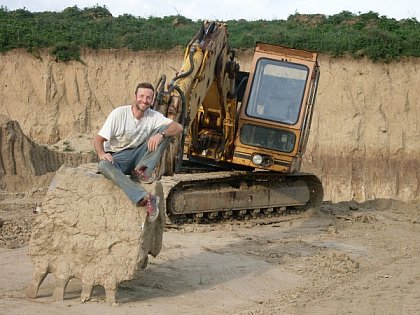DFG ZE 844/1-1
Rekonstruktion der jungquartären Klima- und Landschaftsentwicklung im subtropischen Südamerika anhand von Löss-Paläoboden-Sequenzen entlang eines Transekts von ~ 27 – 38°S
Seit April 2008
Projektleiter: Michael Zech
Kooperationspartner: A. Blasi, C. Castineira, M. Fuchs, Bruno Glaser, U. Hambach, B. Huwe, J.H. May, A. Mehl, L. Moretti, H. Morras, N. Peinemann, J. Sanabria, A. Schellenberger, M. Zarate, L. Zöller

Beprobung Löss PalaeobodenSequenz (Foto: Michael Zech)
Subtropical South America (Argentina, Uruguay, SE-Brazil) is a region where the Late Quaternary landscape evolution is controversially discussed. Palynological data suggest that the Last Glacial Maximum (LGM) and the Late Glacial were cold and dry. On the other hand new stabile isotope results indicate that the LGM and mainly the Late Glacial were relatively humid, at least in the northern part of subtropical South America, what has been attributed to an intensification of the South American Summer Monsoon (SASM). During the Early Holocene, winter precipitation was probably increased due to the strengthening of the trade winds as indicated by boggy soils among other clues. The objective of the present project is to contribute to the reconstruction of the Late Quaternary landscape and climate history (e.g. SASM displacement) of subtropical Argentina and Uruguay by studying sediment/palaeosoil-sequences along a transect from the more humid north (∼ 27°S) to the subhumid south (∼ 38°). Sampling will be carried out at highest reasonable resolution. Applied field and laboratory methodologies comprise sedimentological and pedogenetic analyses, bulk and compound-specific stable isotope analyses, palaeo- and environmental-magnetic and palynological analyses, as well as numeric dating techniques in order to establish sound chronologies.



